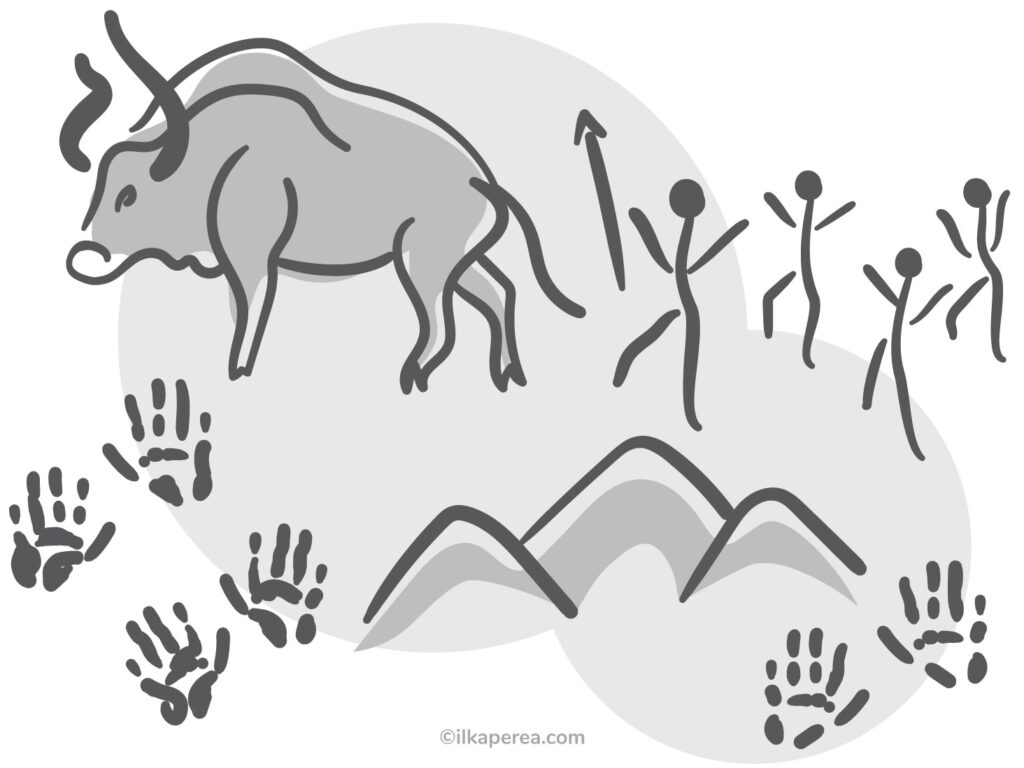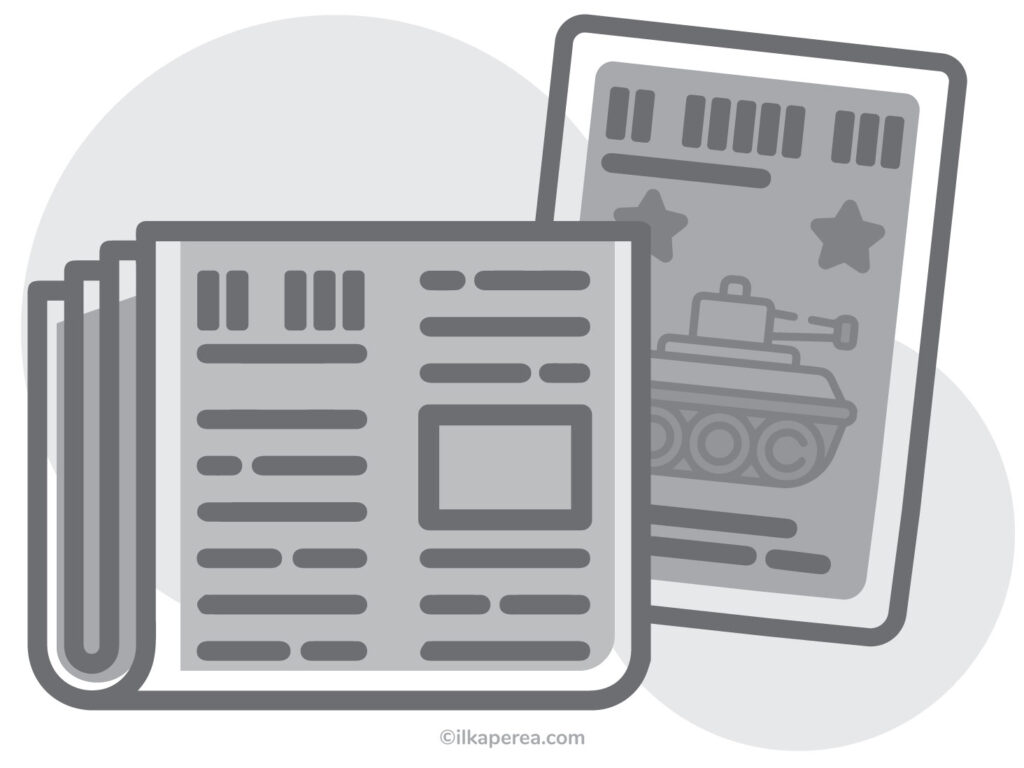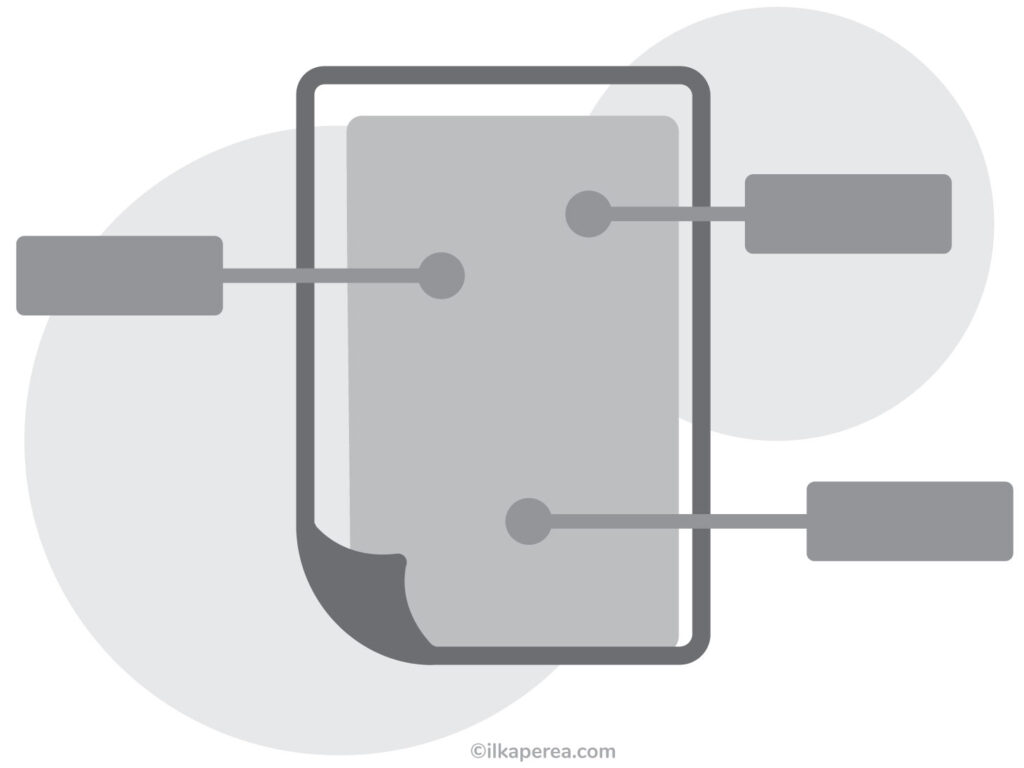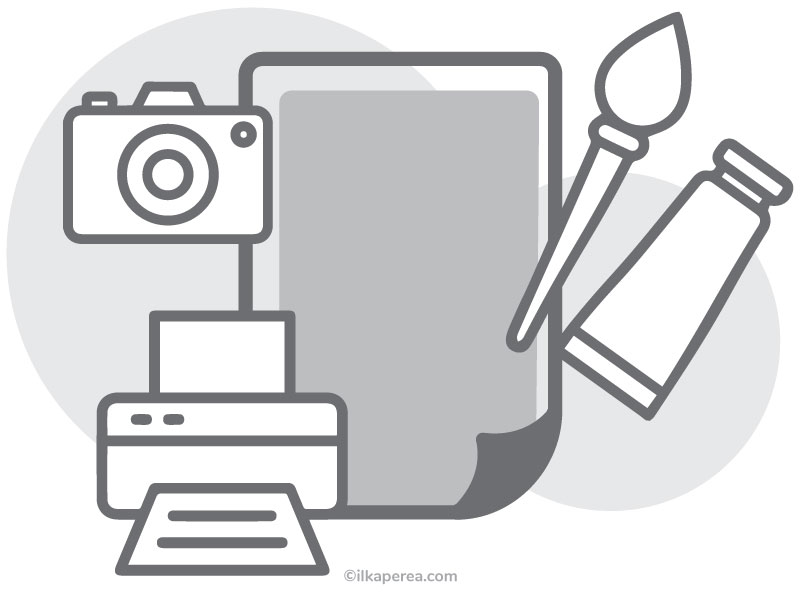Paper as Medium in Graphic Design
Last Updated on: 21st March 2024, 02:19 am
The history of paper is as old and wide as its use in the field of graphic design. Despite the advances in the digital era, paper remains in use due to its characteristics, as well as the wide variety offered in the market. As can be seen, its choice should not be taken lightly, so it is essential to know the properties, types, and use of paper as a medium in graphic design.
The selection of the different types of paper available on the market is one of the decisive factors in getting an optimum quality result. Depending on the project, designers should carefully choose the right type of paper to present the visual and graphic content correctly.
When dealing with several types of paper, designers will always come across certain technical terms that define or describe the specific properties of the paper. In this post, I will explain to you the most relevant terms related to the attributes, composition, and classification of paper as a medium in graphic design.
Table of Contents
- History of Paper
- Brief Historical Context of Paper
- Historical Relationship between Paper and Graphic Design
- Industrial Revolution and Paper in Graphic Design
- Advertising, Paper, and Graphic Design
- Paper Properties
- Paper Components
- Paper Attributes
- Grammage of Paper
- Paper Whiteness and Surface
- Opacity of Paper
- Paper Sizes
- Paper Usage in Graphic Design
- Types of Paper by Use in Graphic Design
- Printing Papers
- Technical Drawing Papers
- Artistic Drawing Papers
- Artistic Painting Papers
- Some Insights
- Paper and Environmental Responsibility
- Paper in Digital Era
- Any Thoughts?
History of Paper

Brief Historical Context of Paper
Since the earliest times, human beings have needed to permanently record images and signs in their memory. Hence, the history of paper is closely linked to the history of culture and society.
Humans needed to communicate with their peers and keep graphic or written records. Proof of this is the cave paintings in the famous caverns of Lascaux, France, and Altamira, Spain. Later, information became written, as it required a more versatile and durable medium.

Another key point was that the information had to be fixed to a light, resistant, and easy-to-transport material. The invention of paper made it possible to replace papyrus and parchment with a material that was easier to produce. Thus began the long road of writing and paper.
The invention of paper probably goes back to the Chinese Tsai Lun, who first made paper from bamboo fibers around 2,000 years ago. For more than 1,000 years, knowledge of this technique was introduced to the Iberian Peninsula by the Arabs, who acquired it along the Silk Road while traveling from China.
Europeans introduced significant innovations to the papermaking process. Unlike the Chinese and Arabs, who crushed the wood and cotton pulp by hand, in medieval Europe, the pulp was crushed with the help of water-powered mills that mechanized the process with hammers.
The need for cheaper mass production also laid the foundation for one of the most important inventions: letterpress printing with movable type, invented by Johannes Gutenberg around 1445. Books could now be reproduced in larger numbers within a very short time. Letterpress printing method also increased the demand for paper.
Historical Relationship between Paper and Graphic Design
With the advent of the printing press in Europe, mankind was able to reproduce text, art, and design on a large scale for relatively little money. It could be said that it was in this context that the relationship between paper and graphic design began.
During the 15th century, leaflets were used throughout England, France, and Germany as religious propaganda by social elites.
Although posters already existed in many early times, the invention of the modern printing press is considered the true precursor of the poster. Because of the constant development of printing methods and paper manufacturing, printing posters in larger quantities and of better quality became possible.
Industrial Revolution and Paper in Graphic Design
Notably, the Industrial Revolution at the beginning of the 19th century brought about important economic and social changes, which influenced mass consumption and, subsequently, the production of graphic design and the demand for paper.
Against the book as a mass product, innovative approaches to book design and book art movements have been emerging time and again since 1890. Publishers and book designers give the book a high-quality design in typography, layout, illustration, and material.
Advertising, Paper, and Graphic Design
As a result of all these changes and innovations, advertising has risen. The first advertising pillars are built, and the first posters are hung in shop windows. Correspondingly, advertising has become more public and more present in everyday life.
At this point, newspapers, which were paper-only, began to print advertisements targeted at specific social classes between their columns. Consequently, the editorial section was increasingly reduced to provide more space for advertisements.

During World War I and World War II, leaflets and posters were printed to enlist soldiers, sell bonds, and fuel anger against enemy transgressions, while others focused many of their leaflets on romantic nostalgia for family values and ideals of a better post-war society.
As it is demonstrated, the relationship between paper and graphic design is close, long-standing, and widely documented.
Paper Properties

Paper Components
In brief, cellulose is the primary component of paper, which is the main component of all plant life. Despite this basic characteristic, there are numerous variants that differ in terms of use and quality. In other words, paper can be made from any type of plant, and each will have its own distinct features.

Drawing paper is usually made from wood pulp or cotton pulp. Probably the most significant difference between the two is that wood cellulose comes from tree fiber, which contains a polymer called lignin. In essence, lignin is the organic substance in plants that makes cell walls strong and rigid.
Lignin causes the paper to become acidic and discolor over time because it reacts to light. In one word, lignin is “photoreactive”. However, when papermakers remove the lignin from the wood cellulose, they obtain a very durable paper.
It is worth pointing out that lignin-free paper is not the same as acid-free paper. The term “acid-free” describes papers and other materials with a pH of 6.0 or higher at the time of manufacture. On the other hand, lignin-free paper denotes materials manufactured with less than 1% lignin.
Paper Attributes
During the processing from raw material to the final product, manufacturers create different properties and attributes for specific types of paper. In summary, these attributes include:
- Grammage
- Whiteness
- Surface
- Opacity
- Size
Grammage of Paper
Paper grammage is expressed in grams per square meter. This is the origin of the term grammage. In short, this grammage describes the strength of the paper.

For more info:
Paper Grammage for Graphic Design
Paper Whiteness and Surface
Bright white paper is often perceived as being of higher quality than, for example, recycled paper. But white is not just white. The different “shades of white” are due to the reflection of light. Manufacturers influence the whiteness of paper by adding bleaching agents. Depending on the dosage, light is reflected more or less strongly in the paper. The more light the paper reflects, the whiter it appears.

For more info:
Whiteness and Surface of Paper for Graphic Design
Opacity of Paper
The opacity of the material depends on its whiteness and grammage. Opacity describes the impermeability of light. In other words, opacity is the opposite of transparency. Opacity is specified on a scale from 0% (completely transparent) to 100% (completely opaque).
The lower the grammage, the more light passes through, and the lower the opacity. The degree of whiteness also affects opacity. High-quality paper grades are less translucent and have a high opacity value. In addition, color tones come out better, and the print appears richer in contrast.
The opacity of printer paper is particularly important for duplex printing (double-sided printing). An opacity of at least 80% is required for a paper to be printed on both sides. If the opacity of the paper is too low, the print on the reverse side shows through, and the content becomes illegible.
Paper Sizes
The most common standardized paper formats are:
- DIN formats
- North American formats
The paper and printing industry always indicates the paper format in millimeters or inches. The width comes first and the height second, so you can always tell from the dimensions whether the paper is vertical or horizontal.

For more info:
Paper Sizes in Graphic Design
Paper Usage in Graphic Design

Types of Paper by Use in Graphic Design
When planning a design project, it will be important to choose the right type of paper or substrate. Since a list of all paper types would be endless, the most popular paper categories are offered here:
Printing Papers
- Copy paper is used for printing documents with images or documents that need to be of a little higher quality.
- Offset paper is a wood-free paper primarily used in offset lithography for printing books, magazines, catalogs, posters, flyers, letterheads, and brochures. It is available in coated and uncoated.
- Coated papers have clay or polymer coating applied to either one or both sides of the paper, making it reflective, so they’re “sealed.” Coated papers have different finishes: gloss, dull, silk, or matte.
- Uncoated paper does not have a coating to fill in between the fibers. It has a more natural and rough texture because the wood fibers are exposed. Color may appear darker on uncoated paper than on coated paper, and images are less sharp.
- Recycled paper is the greenest option. It uses less energy, and water, and produces lower carbon emissions. Recycled papers are available in a range of whitenesses, from natural to bright white shades.
- Handmade paper has been manufactured, sheet by sheet, by hand, instead of a papermaking machine.
- Opaline paper is a natural white to cream-colored business paper with a classy appearance that immediately creates a tasteful style, in addition to being pleasant to the touch. This is one of the most used printing papers because it has a smooth, uniform surface and is an uncoated paper. Great paper for bookmaking, collage, and printmaking.
- Photo paper is specifically made for printing photos. There are four common types of photo paper: glossy paper, matte paper, satin/semi-gloss paper, and luster/pearl paper.
Technical Drawing Papers
- Bond paper is white and can have a smooth finish, for pencil drawings, or a smooth finish, for ink drawings. It is useful for creating drawings such as maps or blueprints.
- Vellum paper is transparent, waterproof, and hard. It is used to trace plans and thus reproduce them easily.
- Millimeter paper is opaque and is divided into one-millimeter squares. It is very useful for making graphs.
- Sketch paper is used for drafts and is usually of low quality, very rough, and yellowish.
Artistic Drawing Papers
- Newsprint papers are thin, durable, & very economical packaging paper, utilized for wrapping, crafts, and sketching. The newsprint papers are not acid-free, so they are most likely to turn yellowish with time. On their smooth surface, graphite pencils, charcoal pencils, and oil pencils will work well.
- Sketching papers works well for creating clean lines because they have smooth surfaces. It is suitable for pencils, colored pencils, and charcoal. They are considered lighter versions of drawing paper.
- Tracing papers are used for picture tracing and transferring to other papers.
- Drawing paper is frequently used for finished work and drawing. It is a good paper for working with graphite, charcoal, soft pastels, oil pastels, markers, and colored pencils.
Artistic Painting Papers
- Pastel papers are textured so that they can hold layers of pastel pigment.
- Watercolor papers are made with cotton fibers or wood pulp, or a mixture of both. Besides watercolor, this paper works pretty well with gouache, colored pencils, watercolor pencils, liquid acrylics, graphite, and monochromes.
- Mixed Media paper is a hybrid between a drawing and a watercolor paper. The surface was created for wet media and dry media. This paper is suitable for graphite, colored pencils, markers, acrylic, watercolor, gouache, pen and ink, charcoal, monochromes, pastels, fine liners, and a long list of other mediums.
- Toned papers have a value other than white. It often comes in shades of gray, tan, black, and blue. Graphite or other dark media are used to push darker values and white pencils or other light media to add highlights, making sketches and drawings shine.
- Marker papers have an incredibly smooth surface and ease of blending. It prevents bleeding and feathering of the markers.
- Bristol paper comes in two different surface types: smooth (for pen, ink, colored pencils, or graphite) and vellum (for charcoal, pastel, and crayon).
Some Insights
All these types of paper have been manufactured to fulfill contrasting functions and are used for various purposes. Nowadays, however, the search is always on for sustainable resources that can complement or replace conventional paper grades.
For example, grass paper is a promising solution. The production process of grass paper is easier than wood-based paper production. In addition, grass paper is very versatile: it can be used for folding boxes, packaging (even for food), brochures, or labels.
Paper and Environmental Responsibility
Recycled paper has become the trend among environmentally-conscious designers and brands. Saving paper is another activity that is quite simple to do and demonstrates our desire to be part of the change.
Handmade paper is also another alternative that has come back on the rise, both for its eco-friendly features and its artisan value. Handmade paper was already being printed in Gutenberg’s time, using typographic printing with movable type. Today, this paper can be used for both traditional and digital printing.
Paper in Digital Era
In fact, the advent of digital media has reduced the role of paper in the diffusion of information and knowledge. However, one must keep in mind that, until a few decades ago, the communication and transmission of any type of information took place on a sheet of paper. This was also true for visual communication and graphic design.
Any Thoughts?
In the comments section, tell me if you already knew about these paper features. As a designer, how do you choose your paper?

Share
Spread the love… and this post!
If you liked it, share this post on your social networks. Smart designers share good things with others.

Bibliography
- Asuncion, J., Vidal, A. (2003). The Complete Book of Papermaking. Lark Books.
- Dabner, D., Stewart, S., Vickress, A. (2020). Graphic Design School: The Principles and Practice of Graphic Design (7th ed.). Wiley.
- Hunter, D. (2011). Papermaking: The History and Technique of an Ancient Craft. Dover Publications.
- Kurlansky, M. (2017). Paper: Paging Through History. W. W. Norton & Company.
- Meggs, P. B.; Purvis, A. W. (2016). Meggs’ History of Graphic Design (6th ed.). Wiley.



